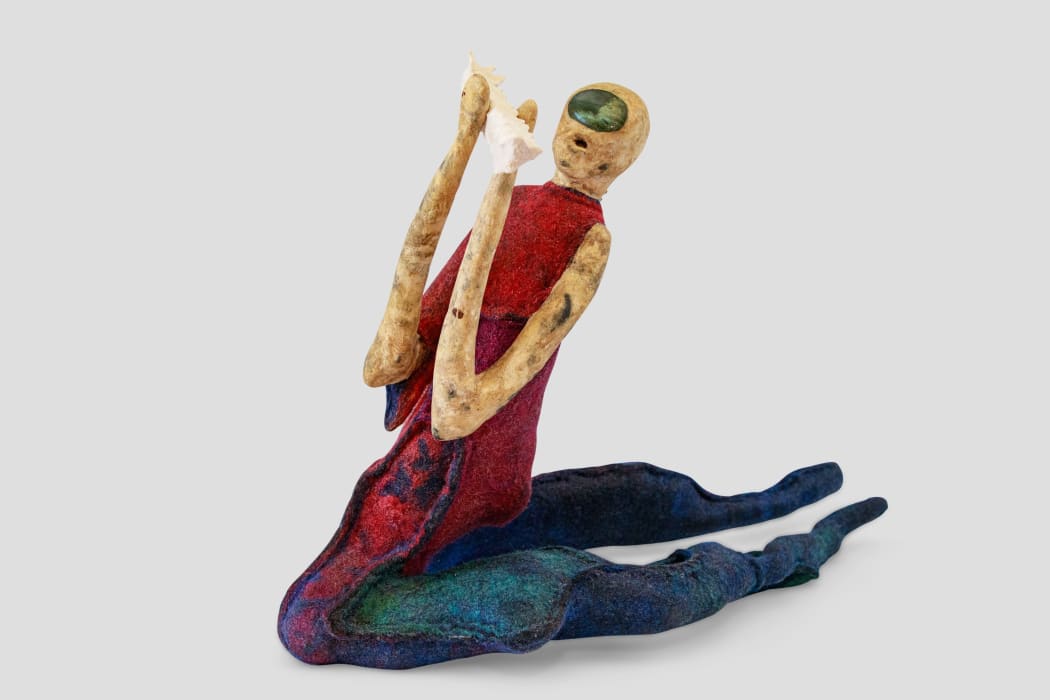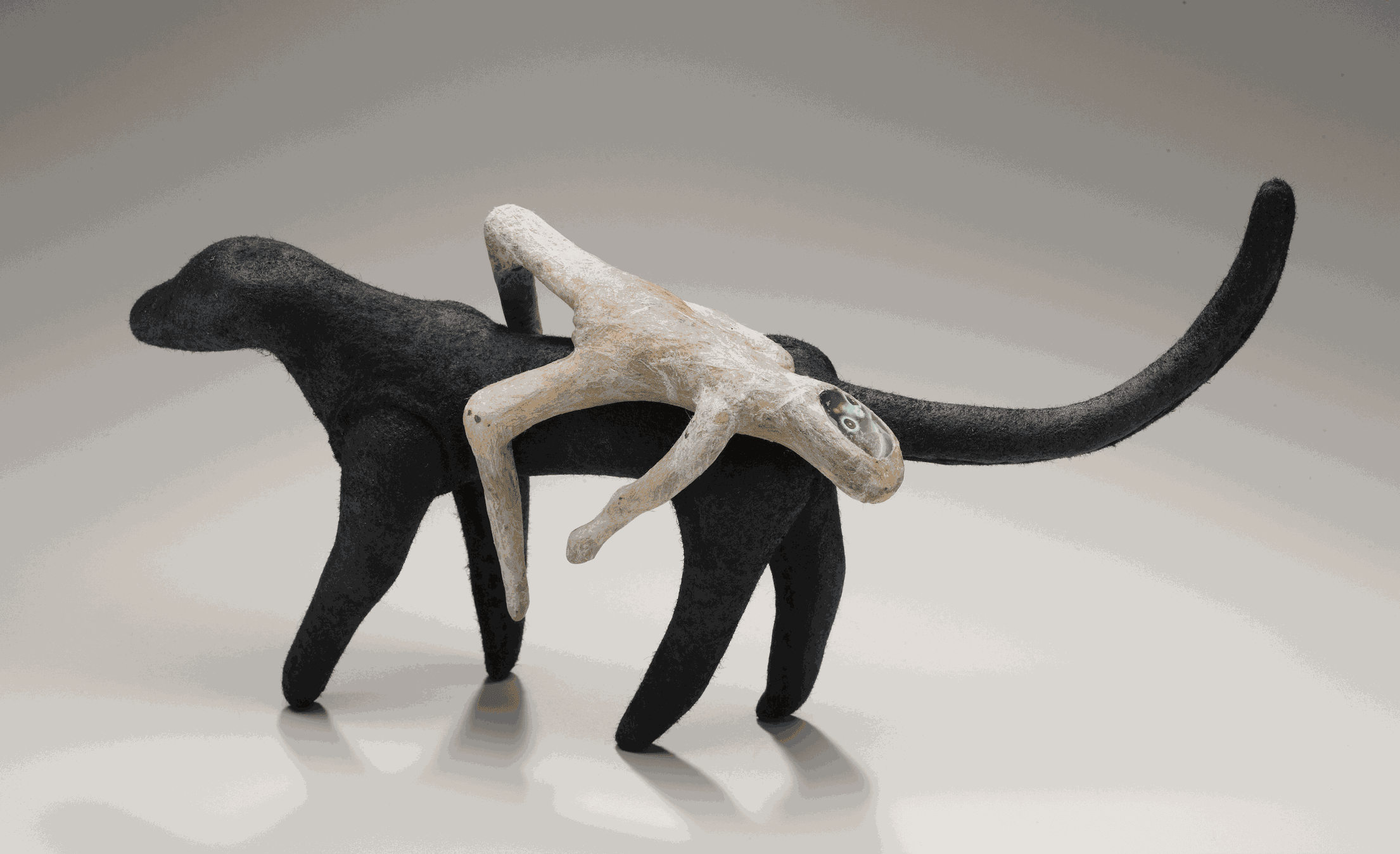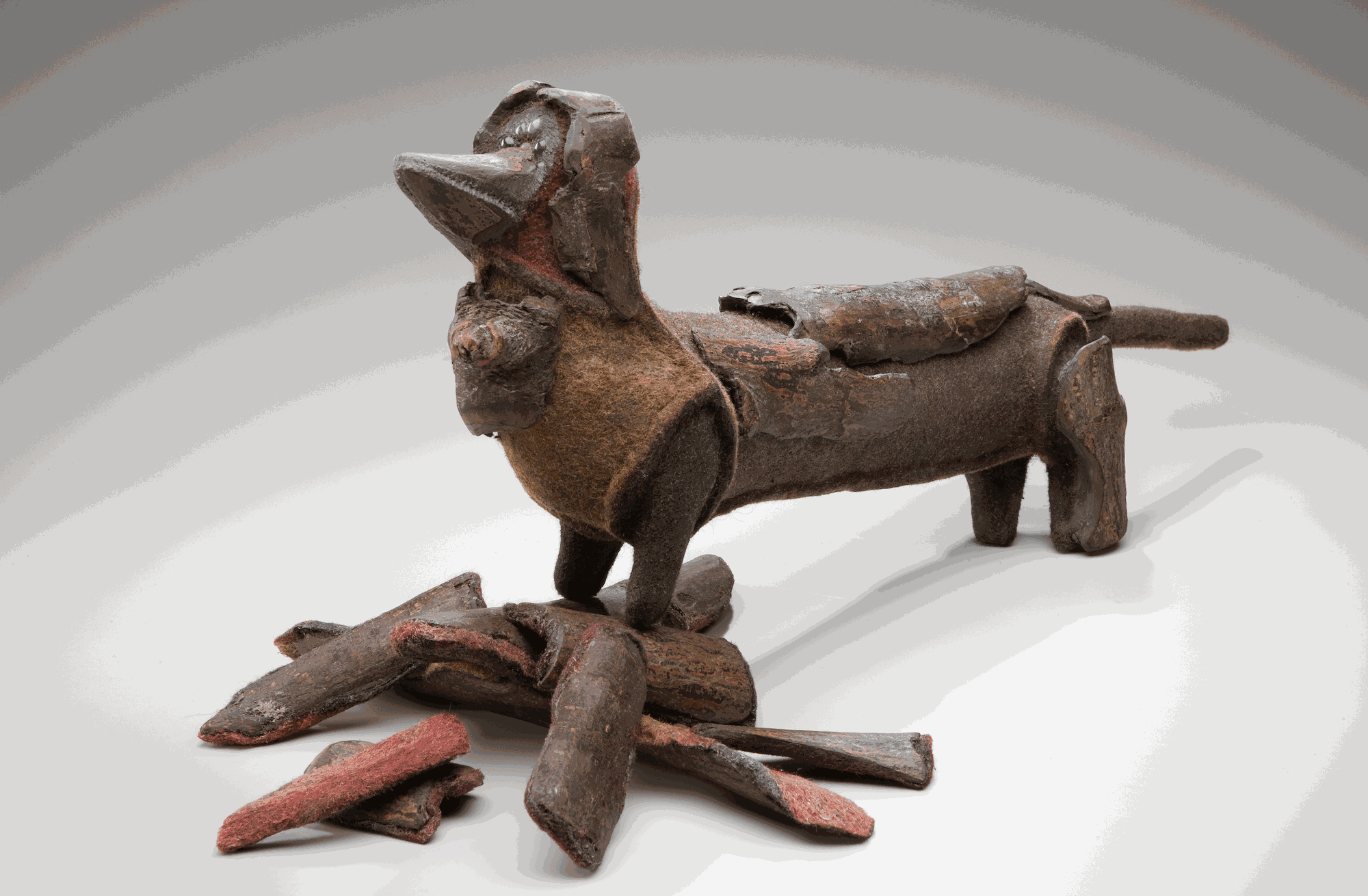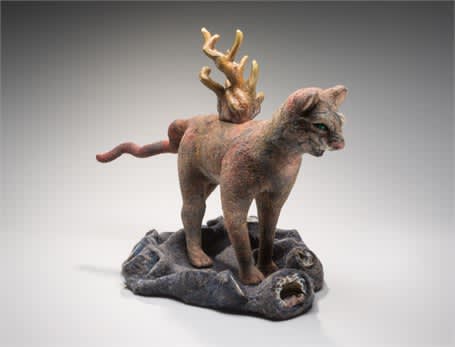
Susan Aaron-Taylor is an artist and educator working in craft sculpture on the threshold of consciousness, an intangible place where psychological visions and lived experiences mix in various ratios to create objective reality. A communicator by vocation, Aaron-Taylor calls forth, sustains, and shares the fleeting knowledge uncovered in dreams through her sculpted felt works. These works tend toward the autobiographical and use Jungian psychology, shamanistic practices, and a sense of universal spirituality to expose the common, intangible threads that link humans to one another.
Although Aaron-Taylor has always been a creator, her conceptually-charged, sculpturally-based textile craft didn't begin to mature until her graduate studies at Cranbrook Academy of Art, where she received her MFA in fiber design and sculpture. Today, with more than 40 years of fine-art experience, Aaron-Taylor continues to animate the ephemeral messages from her dreams, simultaneously unifying her conscious and unconscious self and identifying the universal themes, motifs, and archetypes that constitute our collective understanding of the world and our place within it. When she isn't studying her dreams or crafting new work, Aaron-Taylor is serving as the Professor Emerita in the Crafts Department of Detroit's College for Creative Studies.
Art as a Lifelong Practice
“Dreams come to tell you something you don’t know,”
-Susan Aaron-Taylor (Jung Journal: Culture & Psyche spring 2010 volume 4, number 2).

Dog and Child: Unexpected visitors with a special message.
Since childhood, Susan Aaron-Taylor has interpreted her dreams; “ I have early memories of discussions with my mother about what [my dreams] might mean,” (Jung Journal: Culture & Psyche spring 2010 volume 4, number 2). While Aaron-Taylor's fascination with dreams has been a self-proclaimed lifelong fixation, it wasn't until she discovered the work of Carl Jung that she began systematically unpacking her dreams.
Adopted later in life, this ritual of recording and interpreting dreams profoundly affected the artist's life and works; it has made her more mindful, thus helping her along her journey to achieving individuation, and served as a bottomless well of inspiration for her sculptural works. After more than half a lifetime, Aaron-Taylor's being, dreams, and art are now inextricably linked, making each consecutive sculpture more intimate, conceptually layered, and representative of her spiritually charged and psychologically informed ethos.

Dachshund, 2020.
Unpacking Aaron-Taylor's Muses
Aaron-Taylor's creative process begins quite literally when she wakes, at which point she uses a bedside journal to record the details of her dreams. She then interprets the significance of these details with a breadth of reference materials and decades of experience informally studying dreams. These efforts culminate in deep insights into her psychology, which she translates into sculptures. Like many disciples of Jungian psychology or shamanistic practices, Aaron-Taylor believes the subject matter of her dreams to be a subconsciously purposeful assemblage of symbols.
When Aaron-Taylor sculpts her dreams, she translates the ephemeral into the tangible, allowing her to study the significance of her dreams in greater detail. Counterintuitively, Aaron-Taylor's use of intimate and precise detail is responsible for her sculptures' universal appeal; Similar to how a literary master can distill the most relatable, potent emotion in the internal struggle of a main character, Aaron-Taylor connects with her audience through the authenticity of the emotion and beliefs informing her work. Of course, viewers would be unable to appreciate this authenticity without the physical form of Aaron-Taylor's sculptures, which brings us to her fabrication process.
The Fabrication Process
Once an idea takes hold of Aaron-Taylor, she commits to bringing it to life, scavenging the landscape for sticks, stones, moss, and other natural materials to serve as the skeletons for her sculptures. Once repurposed, these organic materials serve as a conduit between the tangible world of nature and the intangible world of dreams. As with the dreams that inform her work, the materials that form Aaron-Taylor's work must speak to her on a subconscious level; Her selection is intuitive, a dialogue between a singular and collective unconscious, herself and mother nature. For Aaron-Taylor, nature is full of potential, but that doesn't mean any natural detritus will work as a foundational element of one of her works.

Tiger Teapot, 2013: With so many fine contours, sourcing the skeletal materials for a sculpture can take months.
With the raw materials for her sculptural works sourced, Aaron-Taylor begins honing the potential of her found materials with her literal and psychological toolbox. After she establishes a rough silhouette, Aaron-Taylor begins her labor-intensive process of creating her richly colored, texturally dense felt. She starts with sheets of felt, which she dyes, then presses together between netting. She sprays this raw felt hide with diluted soap to make it pliable. She then works the material by hand to loosen the its fibers, making it easier to shape into whatever figure or inspiration occupies her mind.
Once she is satisfied with the felt's pliability, Aaron-Taylor manually shrinks the felt hide by alternately shocking it with hot and ice-cold water. With the felt at its desired color, pliability, structural rigidity, and size, it is ready for Aaron-Taylor to sew it together into a skin for her sculpture's skeleton. Next, Aaron-Taylor casts the sculpture’s final form by dunking her creation in bookbinders glue, which lends the piece structural integrity. Finally, Aaron-Taylor finishes her artwork with a meticulous sanding process.

Mending, 2020 : An endearing example of Susan Aaron-Taylor's otherwordly work.
The final product is an artistically and psychologically layered work that resonates with viewers on an aesthetic and subconscious level. While many of us will not have encountered the exact figures depicted by Aaron-Taylor, the raw emotion embedded in the work will be familiar to all: “When people can relate, when they come up and say, ‘Aha, I get it,’ then I’m fulfilled,”’–Aaron-Taylor, American Craft Magazine. Although society identifies Aaron-Taylor as an artist and educator, she is also a spiritually attuned human encouraging us to delve deeper into the narratives and experiences that constitute our being.